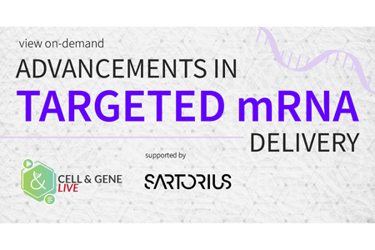CGT Delivery Challenges

By Erin Harris, Editor-In-Chief, Cell & Gene
Follow Me On Twitter @ErinHarris_1

Mass General Brigham recently revealed its “Disruptive Dozen,” 12 emerging cell and gene therapy (CGT) technologies with the greatest potential to impact health care in the next several years. The “Disruptive Dozen” results from interviews of 50 Mass General Brigham senior Harvard faculty followed by a rigorous selection process to identify the 12 most likely to have significant impact on patient care in the next few years.
One of the Disruptive Dozen includes new technologies for delivery gene therapies. Mass General Brigham stated that a formidable challenge in the field of gene therapy is delivery — getting gene-based therapeutics into the body and into the right target cells. Researchers are exploring the potential of new delivery methods that could expand the reach of gene therapy, including microneedles. When applied to the skin, a microneedle patch can penetrate the outermost layer with minimal pain and discomfort. This novel delivery method can readily access the legion of immune cells that reside in the skin - important targets for vaccines as well as for the treatment of various diseases, including cancer and autoimmune conditions. Another emerging technology involves an implantable device made of biodegradable materials. When placed inside the body, this device can provide localized, sustained release of therapeutics with few side effects. The approach is now being tested for the first time in cancer patients using standard chemotherapy drugs administered directly at tumor sites. In the future, this method could be customized for the delivery of gene therapy payloads, an advance that could revolutionize cancer treatment, particularly for difficult-to-treat tumors like pancreatic cancer.
Delivery Remains a Challenge in mRNA / RNA Therapeutics
Speaking of delivery technologies, our most recent Cell & Gene Live focused on delivery challenges as they apply to mRNA. A key challenge to using mRNA-mediated therapeutics extensively across the cell and gene therapy field is how to ensure these particles reach the targeted cell type while prolonging efficacy and maintaining safety. The clinical translation of mRNA therapeutics has been made possible through advances in the design of mRNA manufacturing and intracellular delivery methods. However, broad application of mRNA is still limited by the need for improved delivery systems. Yes, mRNA has broad potential as a therapeutic. The clinical translation of mRNA therapeutics has been made possible through advances in the design of mRNA manufacturing and intracellular delivery methods. However, broad application of mRNA is still limited by the need for improved delivery systems.
Subject-matter experts, Dr. Murat Kalayoglu, CEO of Cartesian Therapeutics and Walter Strapps, Ph.D., CEO of Carver Biosciences, joined me for a one-hour Cell & Gene Live event that dug deep into the trenches of mRNA delivery. We talked through well-chosen delivery vehicles that protect their mRNA cargo against degradation or immune recognition without the need for extensive chemical modification. We focused on the top challenges associated with cell-specific mRNA delivery, the advancements that have been made to date, and a look at the near-term.
Click here to view Cell & Gene Live, “Advancements in Targeted mRNA Delivery.”
